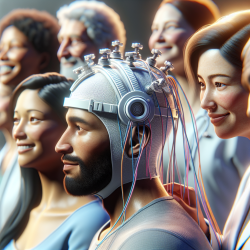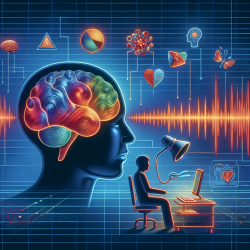Aphasia, an impairment in language function often resulting from brain damage, presents significant challenges for both patients and practitioners. Traditional speech-language therapy has shown limited improvements, particularly in the chronic stage of aphasia. However, recent research offers promising advancements in this field. One such study, "Enhancement of Facilitation Training for Aphasia by Transcranial Direct Current Stimulation," provides insights into how practitioners can enhance their therapeutic approaches.
Understanding tDCS and Its Application
Transcranial Direct Current Stimulation (tDCS) is a non-invasive neuromodulation technique that has been explored for its potential to improve language functions in chronic aphasia. The study by Ihara et al. (2020) investigated the effects of combining tDCS with tablet-based language training on non-consecutive days, targeting the left inferior frontal cortex.
Key Findings
The study demonstrated that participants who received tDCS showed greater improvements in naming and sentence production tasks compared to those who received sham stimulation. Notably, the accuracy rate of naming was significantly higher in the tDCS condition, and there was a significant improvement in the production of related words and sentences for untrained words.
Implementing tDCS in Practice
To incorporate the findings of this study into your practice, consider the following steps:
- Assessment: Evaluate your patients' specific language impairments and determine if they are suitable candidates for tDCS combined with language training.
- Equipment: Ensure you have access to a tDCS device and are trained in its safe application. The study used a battery-driven constant DC stimulator with specific electrode placements.
- Training Schedule: Plan non-consecutive training sessions to reduce the burden on patients and their families. The study conducted sessions over four non-consecutive days within two weeks.
- Tablet-Based Training: Utilize tablet-based applications for language training, focusing on tasks such as spoken word-picture matching, naming, and sentence production.
- Follow-Up: Conduct follow-up assessments to evaluate the long-term effects of the training and adjust the therapy plan as needed.
Encouraging Further Research
While the study provides compelling evidence for the effectiveness of tDCS in aphasia therapy, it also highlights the need for further research. Practitioners are encouraged to explore additional studies and contribute to the growing body of knowledge in this field.
For a deeper understanding of the study and its methodology, you can access the original research paper here: Enhancement of Facilitation Training for Aphasia by Transcranial Direct Current Stimulation.










